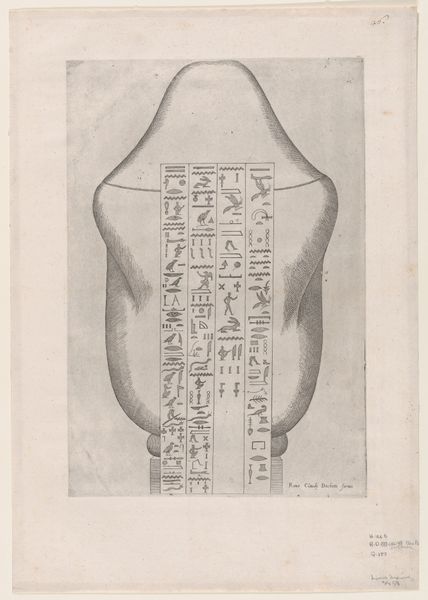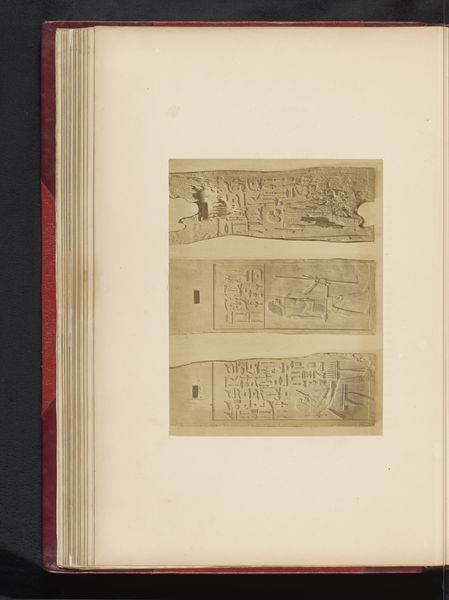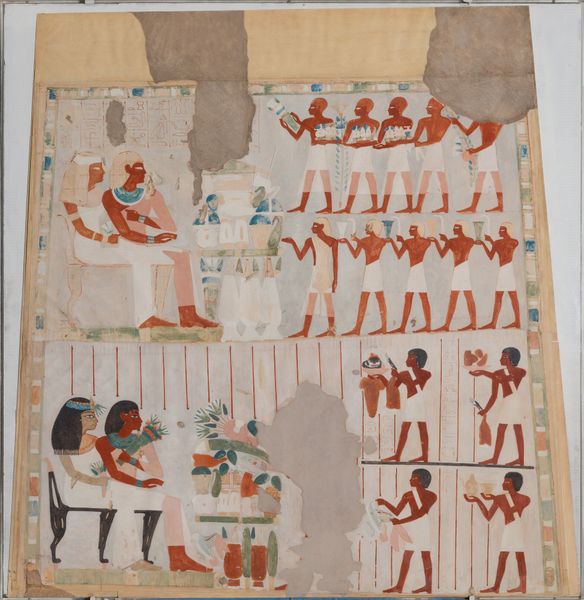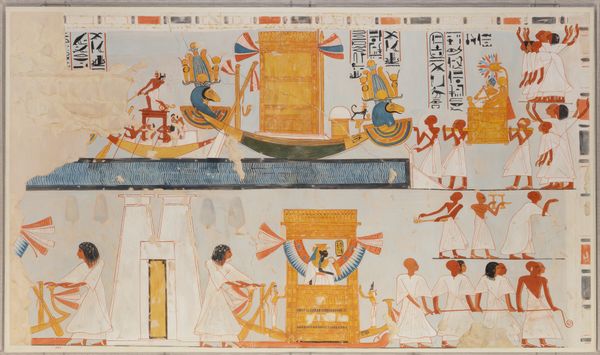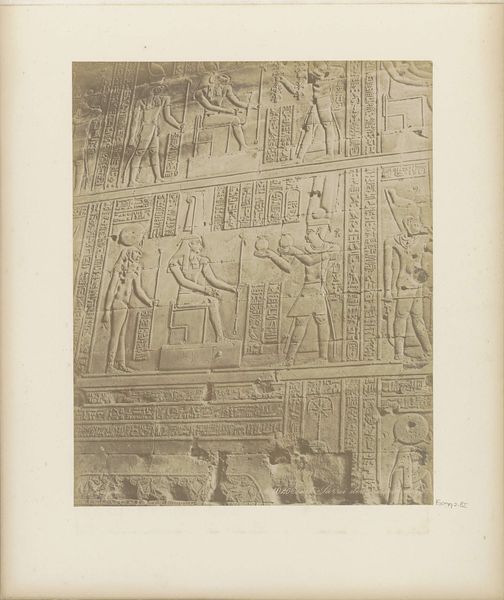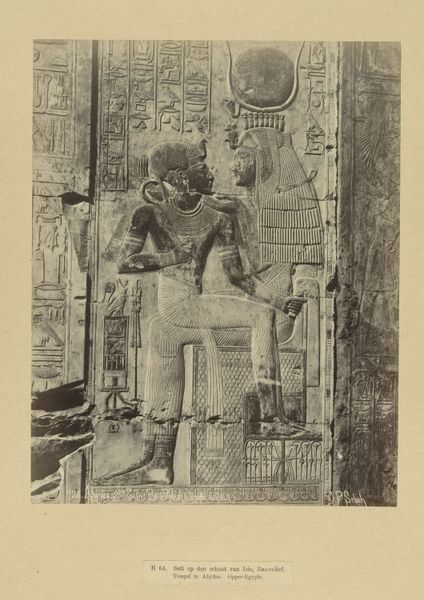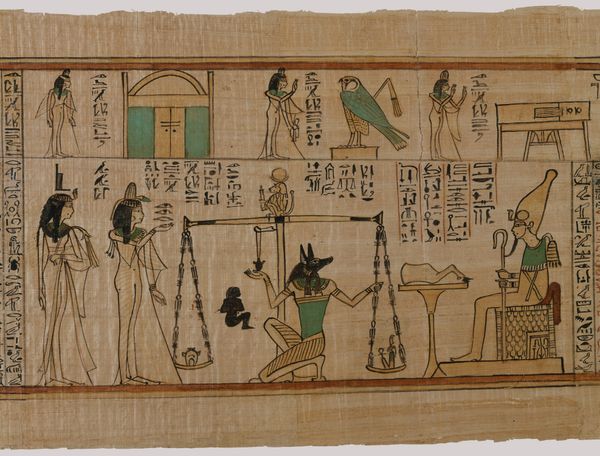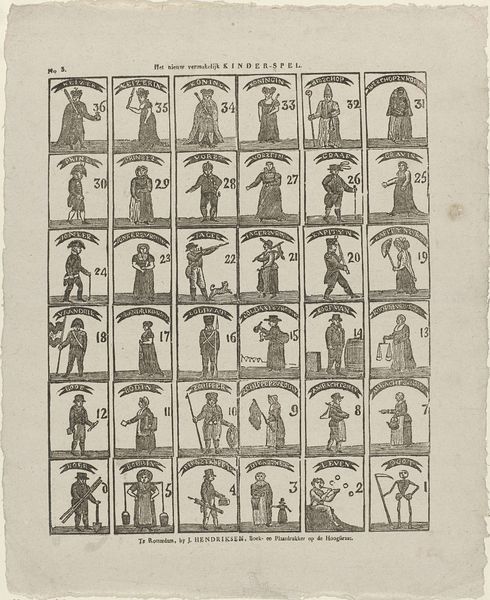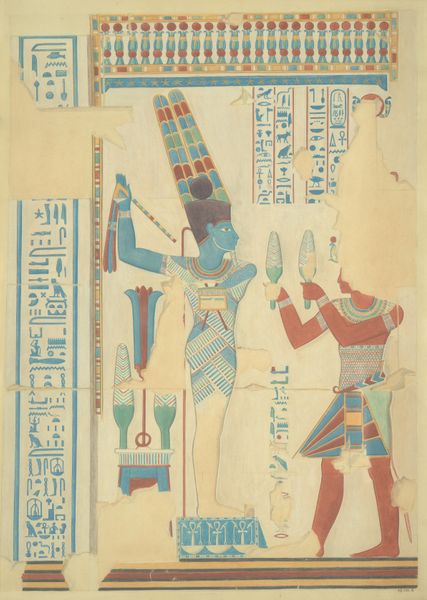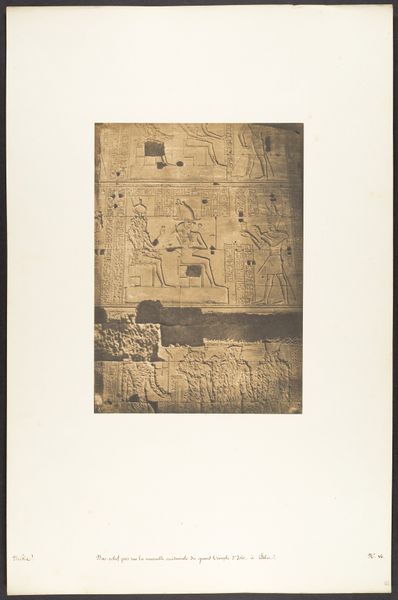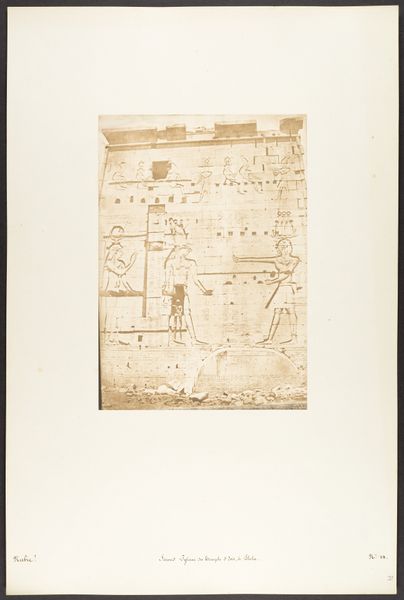
drawing, ink
#
drawing
#
comic strip sketch
#
narrative-art
#
pen drawing
#
mechanical pen drawing
#
pen illustration
#
old engraving style
#
ancient-egyptian-art
#
figuration
#
personal sketchbook
#
ink
#
geometric
#
ancient-mediterranean
#
pen-ink sketch
#
thin linework
#
pen work
#
sketchbook drawing
Dimensions: height 350 mm, width 270 mm
Copyright: Rijks Museum: Open Domain
Curator: Welcome to this striking illustration entitled "The Four Faces of the Pyramidion," dating back to 1881. It’s rendered in ink, showcasing a keen eye for detail within its stark monochromatic palette. Editor: My initial impression? A sense of graphic power, like an early comic book panel with its high-contrast blocks. But beyond that, there is a depth, those clean lines and geometric forms really capture something archaic, yet also surprisingly modern in their simplicity. Curator: Absolutely. These aren't just illustrations, but windows into ancient narratives, dense with symbolism reflective of Egyptian beliefs about the afterlife and the cosmos. Think about the role of the seated figure and sphinx-- powerful signifiers when understood in their complete ideological and historical framework. Editor: It’s the process of reproduction that captivates me. Ink, meticulously applied, almost feels like chiseling on stone, mimicking the original labor of creating hieroglyphs, making me wonder about accessibility, who was the intended consumer of the original artwork versus its copies and reprints? Curator: That tension is vital. This work appears to be lifted from an earlier text. Think about how shifts in cultural reception transform meaning: for example, were these images intended for scholars of Egyptology, for colonial consumption, or for mass entertainment? We need to consider the impact of these appropriations across gender, class, and race. Editor: It’s compelling to consider this work as a part of larger book-making economy. Where were these printed? Who distributed this text? I am most curious to know the means in which the original source was translated for distribution purposes; it seems relevant that each printed copy exists in relationship with a global and regional market. Curator: I think we see, through a material lens, an expression of deep-seated reverence alongside an opportunity to examine cultural imperialism and our collective responsibility to consider global exploitation and representation through visual imagery. Editor: Indeed. Investigating how these materials were processed and the labor needed brings forward complex notions surrounding value, particularly how visual information has circulated transnationally. Curator: For me, reflecting on this image offers us insight into not only Ancient Egyptian beliefs but, ultimately, asks us about ourselves. It highlights the stories we choose to perpetuate about different cultures and whose voices and labors get to be heard in the process. Editor: Agreed, what starts as an old illustration raises fascinating questions about how images, and the materials used to reproduce them, are deployed for cultural and economic ends.
Comments
No comments
Be the first to comment and join the conversation on the ultimate creative platform.
